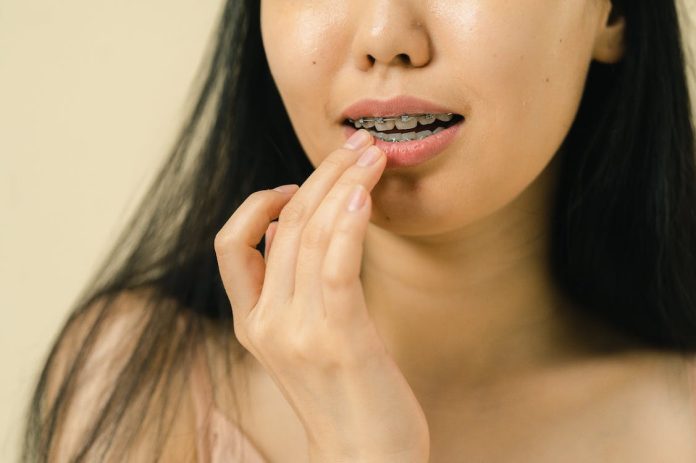If you’re considering getting braces, you’re not alone. Millions of Americans choose to straighten their teeth each year. Thanks to advances in orthodontic technology, there are more options than ever.
Most people who get braces are between 12 and 18, but adults can also benefit from this orthodontic treatment. If you’re considering braces, knowing what to expect is essential to be prepared for the process.
Table of Contents
What You Should Expect
Orthodontists use braces to help correct crooked or overcrowded teeth. Furthermore, wearing braces can also help correct overbite.
There are about 10,658 orthodontists in the US, as per the American Dental Association. This means you can always find a reputable one near you if you want to undergo orthodontic treatments. The same goes for other parts of the world.
For example, in Australia, approximately 400,000 individuals have braces, with adults over 19 making a quarter of these. Hence, there are various orthodontics in Brisbane, Sydney, Melbourne, and other cities available to work on your dental needs, especially braces.
It’s essential to know that each individual has a different experience when wearing braces. However, the following scenarios will give you a general idea of what you can expect at each stage of the treatment process:
Getting Braces
The first step is to consult an orthodontist to see if you’re a good candidate for braces. If so, the orthodontist will take x-rays and impressions of your teeth in order to create a treatment plan.
After the plan is in place, you’ll be able to choose the type of braces you want. Several options are available, including traditional metal braces, clear ceramic braces, and invisible braces.
Once you have decided on the braces you would like, the orthodontist will take measurements and impressions of your teeth. These measurements and impressions will be used to create a custom treatment plan for your case.
The orthodontist will attach the braces to your teeth. This process usually takes place for two to three appointments. During these appointments, the orthodontist will make sure that your braces are fitting properly and make the necessary adjustments.
For some people, their orthodontists would recommend they wear separators or spacers between their teeth for one week or more before they can start wearing braces. However, this depends on a lot of factors. You can ask your orthodontist about it to understand the process well.
Spacers tend to give you a sore and tight feeling for a few days before you get used to them. Wearing spacers tends to feel like there’s something caught between your teeth. However, it’s essential to know that your discomfort will eventually disappear.
After your braces are in place, you will need to see the orthodontist for regular check-ups. During these appointments, the orthodontist will check your treatment progress and make any necessary adjustments.
Wearing Braces
As mentioned earlier, when your orthodontist attaches your braces, you don’t feel any pain immediately. However, the painful feeling will sink in after a few hours. This is because the gentle pressure your braces will provide on your teeth will start to come into force.
It’s critical to keep in mind that your braces will need to be tightened for them to become effective. An orthodontist may do the following when they tighten your braces:
- Place or tighten the springs
- Replace the wires
- Tighten the bands for additional pressure
Depending on your progress, tightening occurs once a month or when it’s necessary. The process of tightening tends to be uncomfortable. In addition, you might feel pain in your gums and teeth.
Removing Braces
Typically, braces stay on your teeth for about one to three years. Once they are ready to be removed, you might feel some discomfort. Furthermore, your orthodontist will remove the bands, wires, and brackets before they clean your teeth and remove any glue that might stick.
You will be expected to wear a retainer, a device that can help keep your teeth in the correct position after removing your braces. Most people tend to wear a removable retainer for a specific time. Moreover, wearing a retainer won’t feel any pain or discomfort.
Braces Tips
During your first week of wearing braces, you’re still getting used to it. Here are tips that can help you get by:
Pain Reliever
As mentioned earlier, you might feel pain a few hours after you get your braces. However, the pain and discomfort tend to last a few days; after some adjustments, you can only feel them for a day or two.
Taking an over-the-counter pain reliever before your bonding appointment would be best. Your medication will start to take effect before the braces put some pressure on your teeth. Moreover, you can continue to take pain relievers; usually, during the first few days, you get your braces.
Soft Foods and Cold Drinks
It’s vital to remember that soft foods and cold drinks are gentle to the teeth. They can also help if your teeth are experiencing any tenderness. In addition, cold stuff numbs your mouth, which benefits you if you feel some pain while still adjusting.
Oral Hygiene
It’s crucial to practice excellent oral hygiene, especially if you’re wearing braces. This will help prevent gum disease and cavities. Moreover, the best way to practice oral hygiene is to brush your teeth with braces more frequently than during your pre-treatment period.
To Wrap It Up
The entire process of getting braces can take anywhere from six months to two years, depending on the severity of your dental problem. After the braces are removed, you’ll need to wear a retainer in order to keep your teeth in their new, straight position. In addition, with proper care, your new smile will last a lifetime!
















